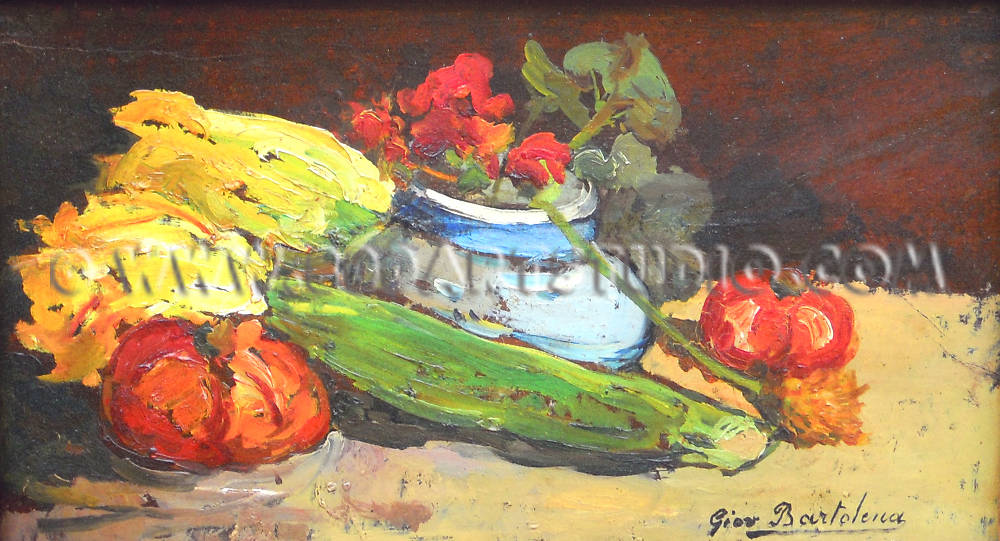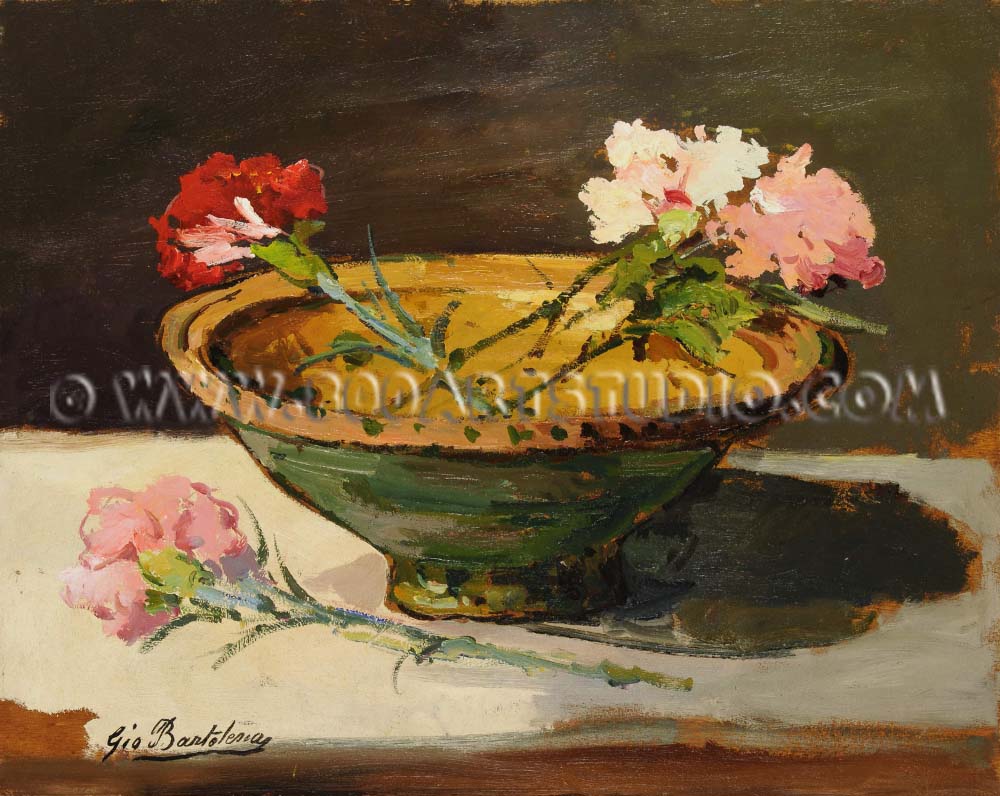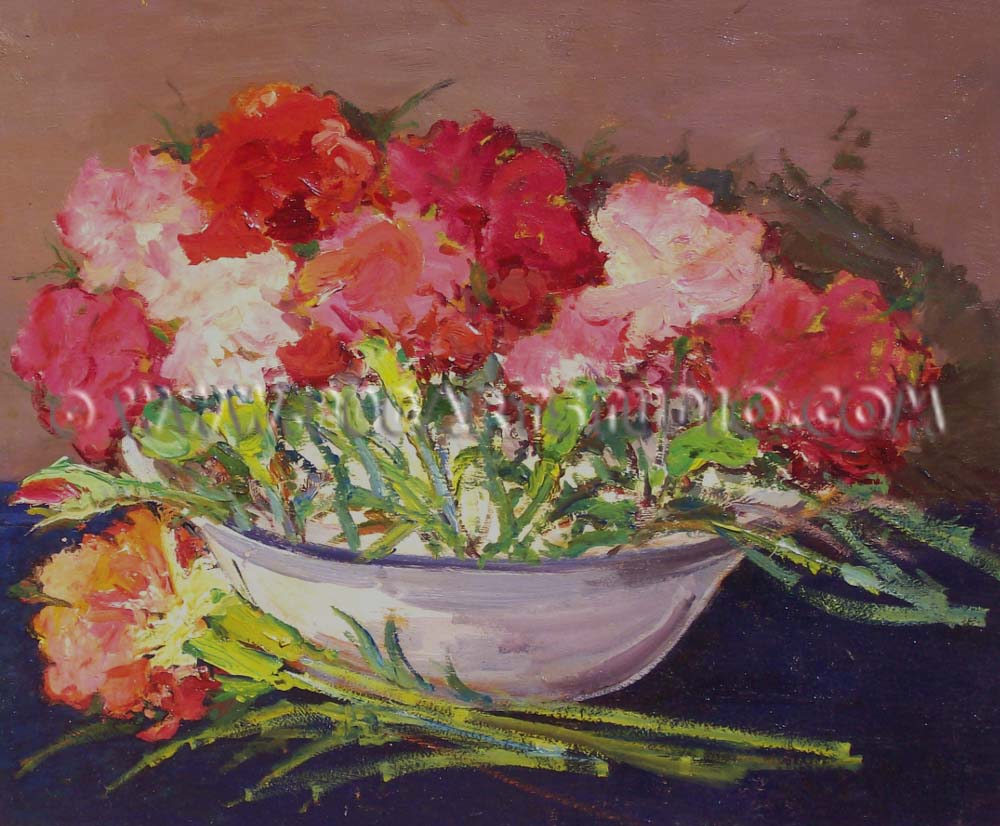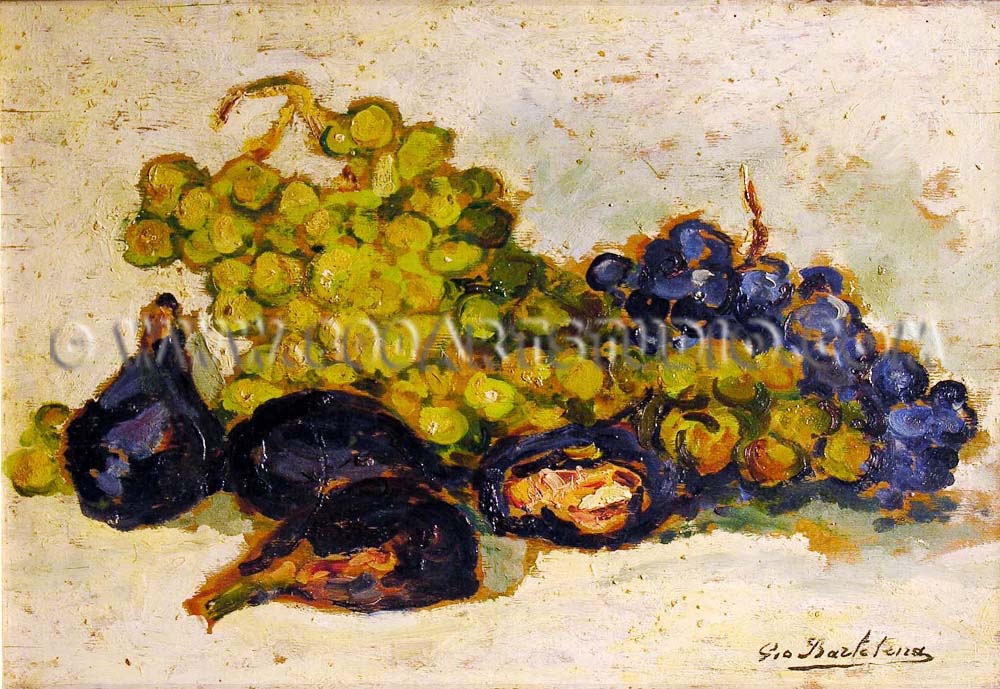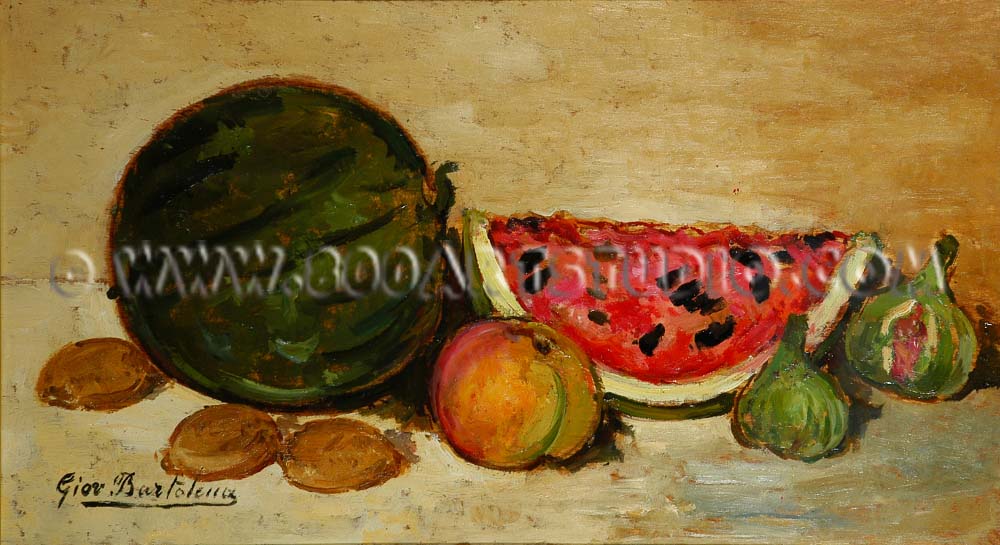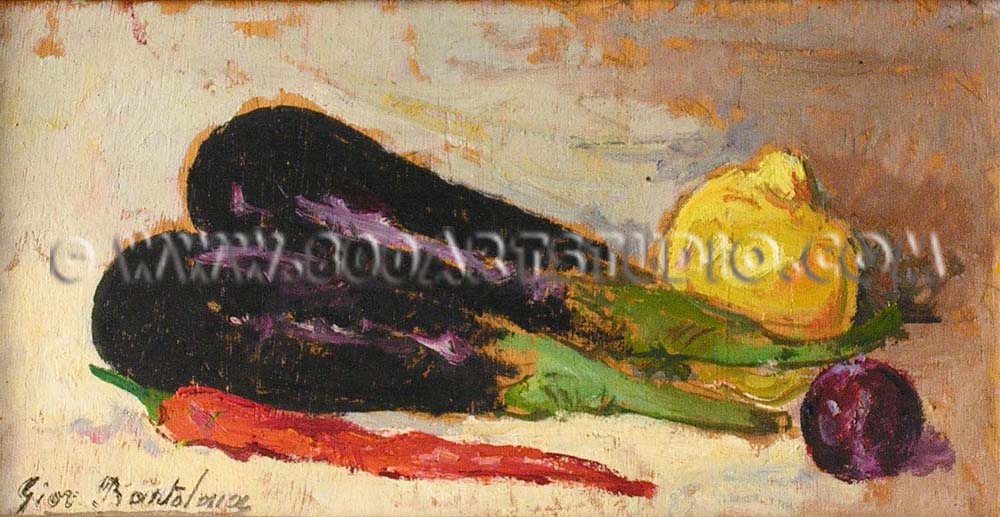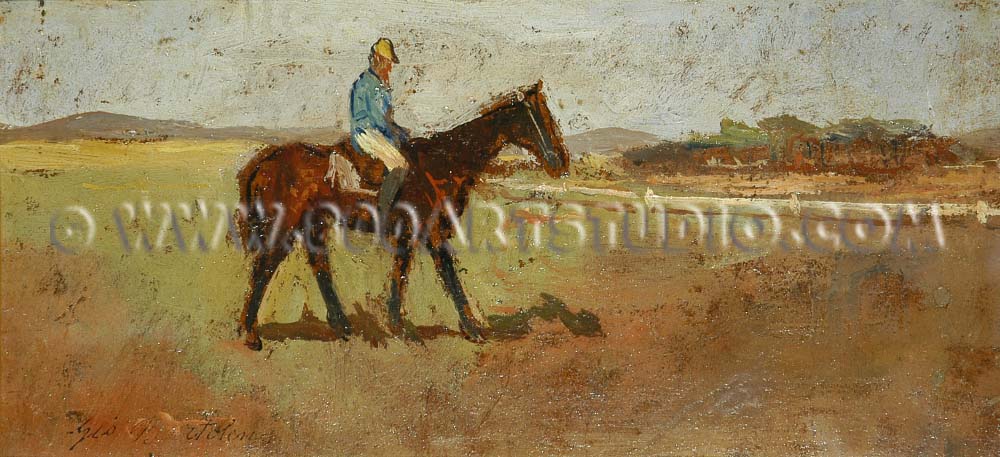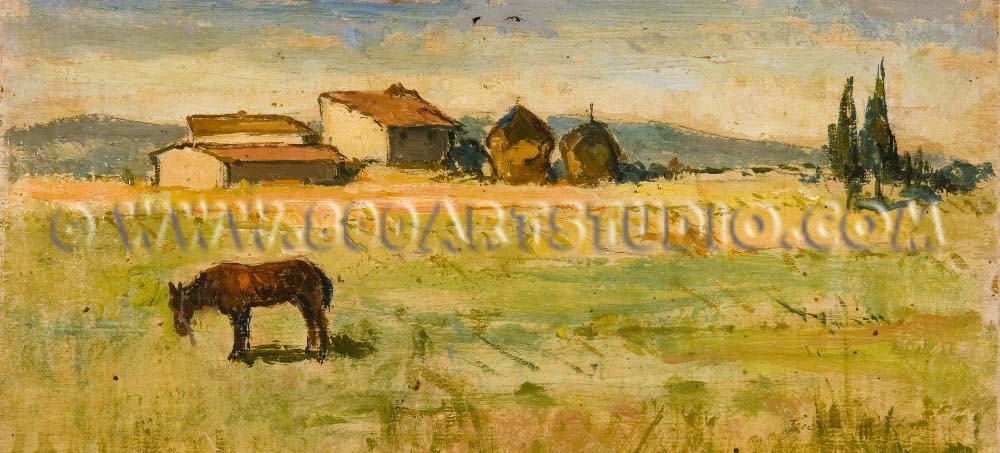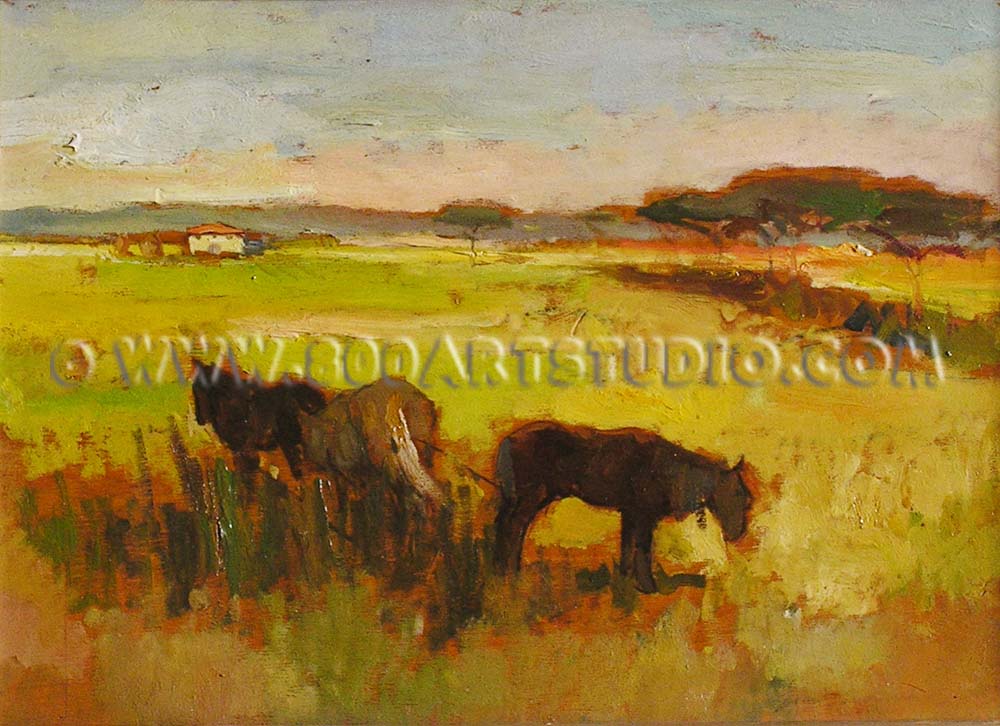Born in Leghorn into a well-off family, Giovanni Bartolena learned the rudiments of painting from his uncle Cesare, author of battle scenes and portraits. In 1886 he moved to Florence with the intention of continuing his studies under the guidance of Giovanni Fattori, but a busy and expensive social life kept him away from the academic studies.
Only in 1892 he exhibited for the first time at the Promotrice of Turin; in the same period he formed a friendship with Signorini, Lega and other habitués of the Caffè Michelangelo in Florence. In the following years, he sent his works to the Florence expositions and in 1896 he participated with “Cavallo morto” (Dead horse) in the First Triennial Art Exposition in Turin. He then decided, following financial troubles, to devote himself only and seriously to his painting activity.
In 1898 he moved to Marseilles, but because of the more and more precarious financial situation, after six months he decided to go back to Italy. He first estalished himself in Lucca, then Florence, where he lived until the outbreak of the First World War. In 1915 he was guest of his friend Plinio Nomellini in Fossa dell’Abate (Versilia); in 1917 the director of the newspaper “Corriere di Livorno”, Paolo Fabbrini, became his Maecenas, which allowed him better life conditions for the next ten years. In 1919 he settled definitively in Leghorn, where a period of intense creativity began, with the production of still life and landscape paintings.
In 1925 there was a new lucky encounter with the textile merchant from Leghorn Luciano Cassuto who became his Maecenas and encouraged him to work with greater confidence. The same Cassuto organized his first personal exhibition, which took place in Milan at L’Esame Gallery between December 1926 and January 1927 and was welcomed by the critics, in particular by Carlo Carrà, who wrote about it in the columns of L’Ambrosiano. During the same year he also exhibited at the Bottega d’Arte in Leghorn and at the Cultural Club in Bologna.
In 1929, tired of the repetitiveness of producing and selling, he parted from Cassuto, but continued to exhibit: in 1930 at the Venice Biennale, the following year at the Roman Quadriennale. In the mid 30s he began to have a good commercial success, but after a few years, he died in the Leghorn hospital.
Written by: Gioela Massagli – Translated by: Cristina Panigada
© Studio d’Arte dell’800


